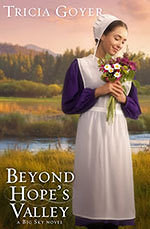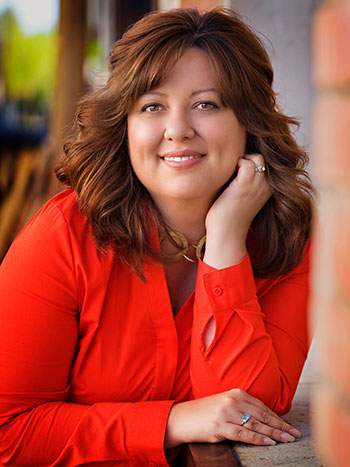 Synopsis:
Synopsis:
Marianna Sommer has returned home to Indiana, with her fiancee, Aaron Zook. Her brother, Levi, is also engaged to be married to Naomi, after spending time living and working outside their Amish community. Naomi is expecting a baby and Aaron has decided that he is meant to live life as an Amish husband and father.
Marianna developed deep feelings for Ben Stone while living in Montana, but she was convinced that their relationship could not work because, like Levi, she is meant to live the Amish way, while Ben is a handsome and immensely talented singer-songwriter. In fact, Ben has resurrected his recording career and left Montana to tour around the country. He has a hit song that audiences love, even though none of his listeners suspect that it was penned in honor of the beautiful young Amish woman that Ben deeply loves.
But Marianna is beginning to wonder if Indiana is still her home. She was convinced, after Aaron ventured to Montana to bring her back with him and they had several weeks together there to get reacquainted, that she wanted to return to the place where she grew up and be his wife. But having lived and worked with the English in Montana, Marianna is having a hard time adjusted to the strict customs embraced and practiced by her Amish friends and neighbors. They immediately sense that she is different but, of course, none of them understand or relate to her experiences. Even Aaron, who saw life in Montana first hand, rejects the ways in which she has changed.
Worse, Levi confesses a secret to Marianna that makes her admire and respect him more, but is also very troubling. And their busy-body Aunt Ida is only one of the people who seems to suspect something about Aaron. Marianna suspects that everything is not as it appears. When she learns the truth, will she reevaluate her choices? Does she really belong back in Indiana?
Review:

Marianna also developed a close friendship with Ben Stone and her burgeoning feelings for him brought into question her plan to remain in Montana with her family only for one year before returning to Indiana to marry and start a family with Aaron Zook. Marianna has loved Aaron since they were children and he has built a home for them in Indiana. But there is something about the appreciative, admiring way that Ben looks at her that draws Marianna to him. Ben has his own troubled past, but turned away from the music industry to find solace and redemption in his simple, quiet Montana lifestyle.
As Beyond Hope’s Valley opens, Marianna and Aaron have returned to Indiana where Marianna will reside with her Aunt Ida. Marianna plans to wed Aaron only after Levi and Naomi have married which she assumes will be very soon, given Naomi’s condition. Surprisingly, however, Naomi’s parents have convinced she and Levi to delay their wedding until after the baby is born. Marianna is unaware of the real reason, but agrees that her wedding will also have to wait.
Marianna awakens on her first day back in Indiana already missing Montana’s beauty and serenity. But she is determined to reintegrate herself back into the Amish community she knows so well. It is not easy, however, because there is no denying that she has been transformed by her time in Montana and she exuberantly tries to share what she learned there with her friends and neighbors. They are not a receptive audience because, as Marianna gradually realizes, they did not see and experience the things she did and they are extremely threatened by the idea of change. Before long, tongues are wagging and Aunt Ida is firing off concerned missives to Marianna’s mother, Ruth, back in Montana.
Ruth, meanwhile, is dealing with an uncomfortable issue of her own. It seems the van driver who transports Marianna and Aaron from the train station to Aunt Ida’s house is an old “friend” of Ruth’s and his reappearance in their Indiana community greatly upsets Ruth. She knows she must return for Levi and Naomi’s wedding and the plan was always to remain in Montana for only one year . . . the Sommer family left their home and most of their belongings in Indiana. Now Ruth questions whether she wants to go back and begins pressuring Abe to sell the farm and remain in Montana. Ruth is devoted to her husband and children, and will not allow herself to fall prey to temptation again. But she learns that the passage of time has a way of putting concerns into perspective. Long-ago feelings of love and desire are never fully the same when resurrected years later and, in Ruth’s case, an item buried for years in the hope chest she left back in Indiana beautifully illustrates for her and readers why some things — and people — are meant to remain in our past where they serve as lessons and reminders to be grateful for the current state of our lives and relationships.
For Marianna, too, the trip home is bittersweet. She learns that you can never really go home again — not because home has changed but, as a result of her travels, she has. During the time Marianna spent in Montana her faith grew to be as large as the Big Sky hovering over the landscape and the simple ways of her Amish community in Indiana are simply to constricting and limiting. Marianna realizes that she has broadened her outlook on how to honor her Amish heritage while interacting with and learning from those who are no Amish. The story is a refreshing statement about tolerance, acceptance, and learning to appreciate the boundless nature of true faith. Mariana comes to understand that she can carry her faith and relationship with her Lord with her no matter where she goes and who she encounters, and learns the value of focusing on that relationship rather than strict rules and limitations. Goyer’s tale parallels the messages of the Old and New Testament, the Old versus the New Covenants, the Law versus the Gospel, with Marianna embodying the concepts. It is highly effective.
Marianna also learns that assumptions are deceiving and people are rarely as transparent as they seem. Meanwhile, Ben is struggling to reconcile his love for Marianna and need for a quiet, peaceful lifestyle with his need to express himself through his music. He loves performing, but rejects the trappings of stardom, including the touring lifestyle. He searches for a way to meld the two while he waits for a sign that his seemingly impossible relationship with Marianna might have a chance to survive.
Readers who enjoyed the first two books will find this final installment satisfying. Goyer brings her principal characters full circle, providing answers to the questions that have tormented them throughout the series in credible, thought-provoking ways. Goyer masterfully crafts stories that illustrate characters finding their way in a providential manner that is believable and does not feel contrived. With Beyond Hope’s Valley she succeeds spectacularly, allowing Marianna’s naive, trusting spirit to gradually evolve as she experiences disappointment and learns that other’s motives may not be entirely pure or altruistic. Her journey, along with her family, to a new understanding of how to live the Amish way in the modern world rings true and never feels heavy-handed, yet brings resolution to conflicts established at the outset of the series that seemed irreconcilable. Like the first two installments, I recommend Beyond Hope’s Valley to all readers who enjoy Amish fiction.



2 Comments
Fairy tale weddings are popular, offering a romantic, “happily ever after” ambiance. The motif can simplify the planning process.
This sounds like a great trilogy – and I really like the titles. They draw me in!